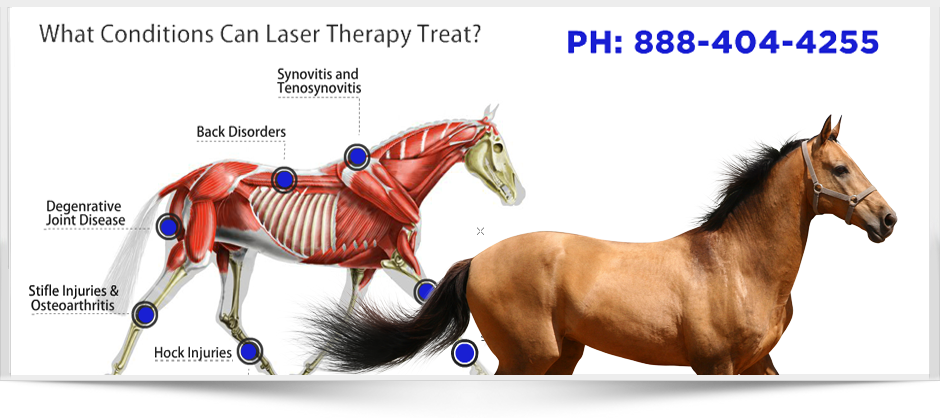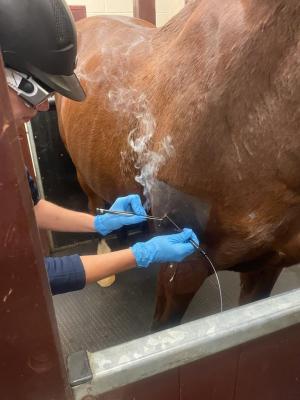Why Equine Therapy is Coming To Be a Preferred Alternative for Emotional Health
Why Equine Therapy is Coming To Be a Preferred Alternative for Emotional Health
Blog Article
Laser Therapy in Equine Therapy: A Modern Method to Improving Steed Health
Laser treatment has emerged as a crucial method in equine therapy, using concentrated light power to promote cellular repair service and quicken healing from a variety of disorders. This non-invasive strategy is especially efficient in taking care of musculoskeletal injuries, injuries, and inflammatory conditions, considerably improving overall equine health. By promoting mitochondrial task and improving ATP manufacturing, laser therapy not just boosts flow but likewise gives substantial discomfort alleviation. As this innovative therapy remains to get grip, it opens fascinating possibilities for attending to persistent conditions like arthritis and unguis problems, signaling a transformative change in vet treatment. What makes this modality particularly engaging?
Understanding Laser Therapy
Laser therapy, a non-invasive treatment modality, has actually gotten considerable traction in equine medication due to its effectiveness in promoting recovery and discomfort alleviation. Improved ATP levels expedite cells repair service processes and minimize swelling, making laser therapy especially efficient for treating musculoskeletal injuries, injuries, and other inflammatory conditions in steeds.
There are a number of kinds of lasers made use of in equine therapy, each with specific wavelengths and power results customized to various therapeutic demands. Low-level laser therapy (LLLT), additionally referred to as cold laser treatment, employs reduced power levels to stimulate cell feature without causing thermal damages. High-intensity laser treatment (HILT), on the other hand, uses greater power levels to attain deeper cells penetration and even more significant restorative results.
Veterinarians make use of numerous laser tools and methods depending upon the problem being treated and the wanted depth of tissue infiltration. Correct training and proficiency are crucial for making sure the safe and efficient application of laser treatment, thereby maximizing its healing potential while reducing threats.
Benefits for Horse Health
With a solid understanding of how laser therapy functions, it is vital to discover its many benefits for equine health and wellness. By stimulating mobile feature, laser therapy promotes faster injury recovery and aids in the regeneration of broken cells.
Additionally, laser therapy has been revealed to improve flow, thus improving blood circulation to influenced areas. Enhanced blood circulation makes certain that necessary nutrients and oxygen are provided a lot more efficiently, helping with the recovery procedure. Additionally, laser treatment's anti-inflammatory impacts help in reducing swelling and pain, which is vital for the general health of the equine.
Pain monitoring is one more significant advantage. By releasing endorphins and obstructing pain signals, laser treatment supplies effective, non-invasive alleviation from both acute and persistent pain. This can add you can find out more to boosted wheelchair and high quality of life for the pet.
Lastly, laser treatment is a non-invasive treatment choice, minimizing the danger of complications related to even more invasive procedures. Its versatility and efficacy make it a vital tool in modern horse veterinary medicine.
Usual Conditions Treated

Another common problem treated with laser treatment is joint inflammation. Furthermore, laser therapy is employed in the monitoring of injuries.
Horse breathing problems, such as reoccurring respiratory tract blockage (RAO), also respond favorably to laser treatment. Laser therapy is beneficial in dealing with hoof issues, including laminitis and abscesses.
Treatment and Safety
Carrying out laser therapy in equine therapy involves a careful procedure to make sure both efficacy and security. Equine Therapy. The procedure begins with a thorough vet evaluation to establish the suitability of laser treatment for the steed's particular problem. site link Once considered ideal, the treatment area is prepared by cleansing and, if required, clipping the hair to improve laser infiltration
The specialist needs to pick the appropriate kind of laser, typically a low-level laser (LLLT) or a high-power laser (HPL), relying on the problem being treated. The laser tool is after that adjusted to the appropriate wavelength, power, and period setups. Throughout the application, the specialist moves the laser over the targeted area in an organized fashion, guaranteeing constant and also direct exposure.
Safety and security protocols are strictly stuck to, consisting of the use of protective eyewear for both the professional and the equine. In addition, it is essential to keep track of the equine for any type of indications of pain or negative responses throughout the treatment. Post-treatment, the steed is usually offered a duration of remainder to permit the therapeutic impacts to materialize.

Future of Horse Laser Treatment
As innovations in veterinary medication continue to unfold, the future of equine laser treatment holds significant assurance. Emerging technologies and much deeper scientific understandings are set to improve and broaden the applications of laser therapy for steeds.
Furthermore, recurring research right into the molecular and cellular systems of laser treatment will likely yield maximized protocols tailored to certain conditions, enhancing performance and minimizing therapy times. Personalized therapy strategies based on genetic and biochemical pens might come to be a reality, making certain that each horse gets one of the most suitable and reliable care.
Moreover, regulatory developments and standardization of methods will improve the trustworthiness and integrity of laser therapy in equine method. Equine Therapy. As these technologies continue to emerge, equine laser therapy is positioned to become an important element of veterinary treatment, offering boosted recovery and boosted lifestyle for horses internationally
Verdict

Report this page